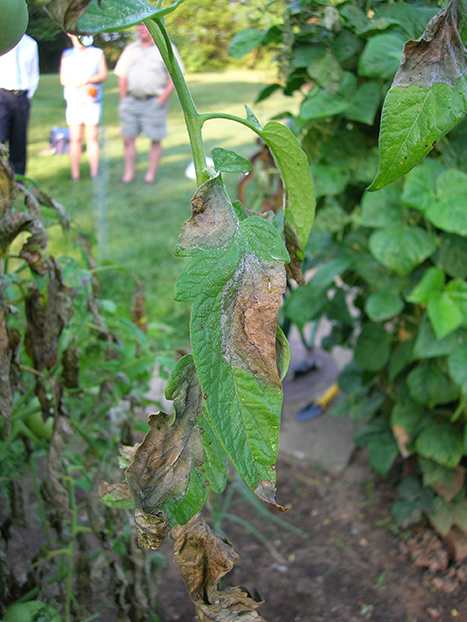Late blight has been reported on potatoes and tomatoes in LaGrange County.Potato and tomato growers in northern Indiana should follow the management recommendations listed below and in the Midwest Vegetable Production Guide for Commercial Growers 2015 (ID-56).
Late blight thrives under cool, wet conditions. The disease can easily spread from plant to plant. Under ideal conditions, the disease can spread rapidly, causing symptoms on all above ground plant parts (Figure 1). The lesions may be green to brown and under moist conditions may be ringed with white fungal growth. Affected tomato fruit may have large brown lesions.
The fungus-like organism that causes late blight does not usually overwinter in Indiana. Therefore, the disease must be blown or brought into Indiana.
All strains of the fungus-like organism that affect tomato will cause disease on potato. However, not all potato strains will affect tomatoes. It is best for tomato and potato growers in northeast Indiana to take precautions against late blight.
Off-season recommendations for late blight include destroying cull piles and disking under affected crops. This time of year, however, the only option left to growers is the application of specialized fungicides. The Midwest Vegetable Production Guide for Commercial Growers 2015 (ID-56) has specific products listed. Many of the products that are effective against late blight are not effective against more common diseases such as early blight or Septoria leaf blight. Organic growers should apply a copper product.
Regular readers of the Hotline will remember a very similar article about late blight n LaGrange County a year ago. Potato and tomato growers in this area should be prepared for similar outbreaks in the future.
More information about late blight is included in this bulletin https://www.extension.purdue.edu/extmedia/BP/BP-80-W.pdf. For a hard copy of this bulletin or for questions or comments, contact Dan Egel.
